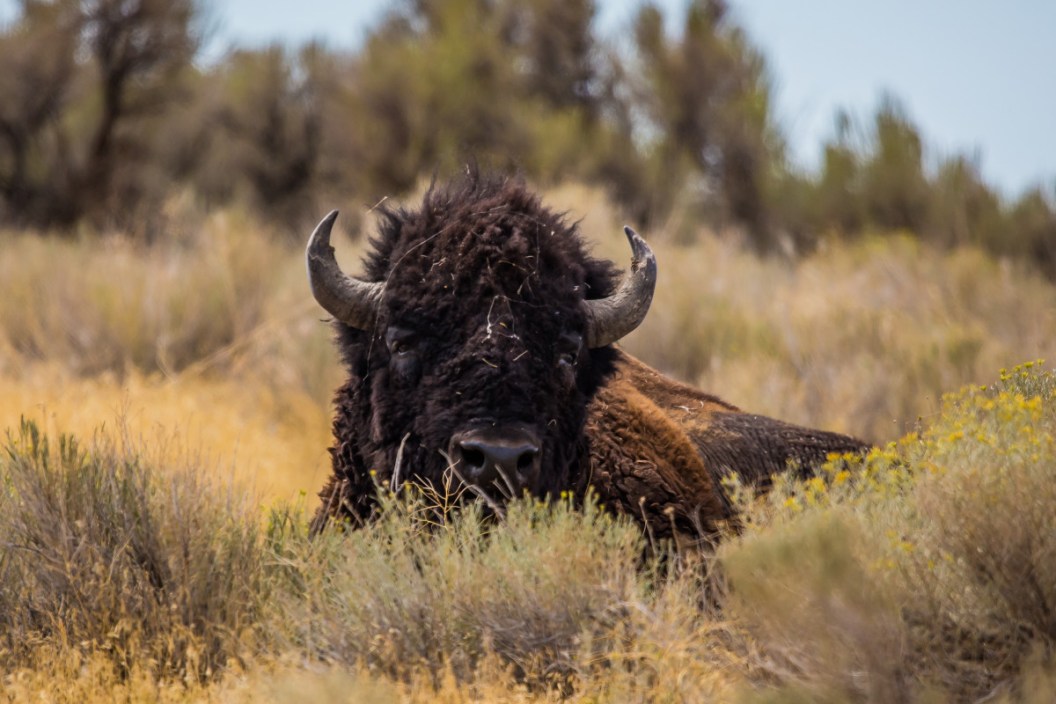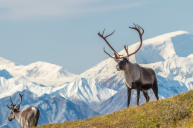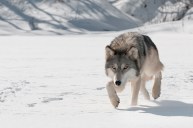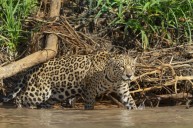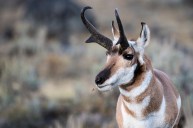There are plenty of notable animals in North America, but few are quite as imposing or impressive as the American bison. These large mammals have lived on the continent since prehistoric times. They may look peaceful and passive, but don't let that demeanor fool you. These animals have an incredibly short temper that they will take out on humans if one just happens to avoid its personal space. The story of wild bison is also the story of modern conservation practices in North America. These animals once roamed vast swaths of the lower 48 United States and up into Canada. At one point, it was estimated that nearly 60 million bison roamed the American prairie. It took less than 100 years for them to be over-hunted to the point that only a few thousand remained. Truly, the animal was just barely saved from following the same fate as the now-lost Eastern elk.
If you were ever looking for the poster child on the importance of conservation, the American bison would be it. Looking back, it's truly a miracle we even have a bison population to appreciate these days. This is the story of what is perhaps America's most iconic animal, and the efforts that saved wild bison from near extinction.
The Bison's Origins in North America
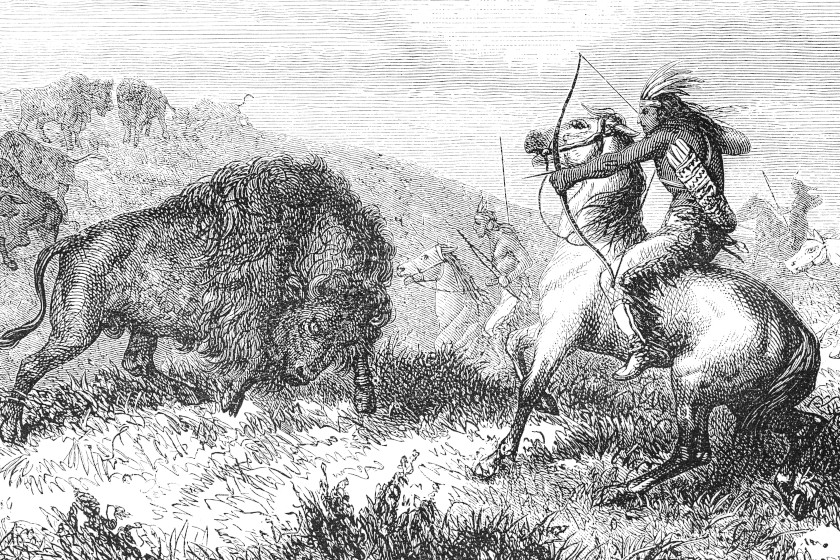
Grafissimo via Getty Images
To understand the full story of "bison bison" as it is known in scientific circles, it is important to know just how long our National Mammal has been here and how they got here in the first place. According to the Department of the Interior, today's modern bison's ancestors first crossed the Bering Straits land bridge that once connected Asia and North America. This was approximately 400,000 years ago, back during the Pliocene Epoch, so these animals have been in North America for quite some time. The first bison were decidedly more prehistoric and larger in stature than today's animals. The modern bison tops out at about nine feet long, and 1,100 pounds for females and nearly 12 feet long, and 2,000 pounds for males on the large end. In any case, the ancient bison found the climate and forage in North America to their liking and quickly spread. According to the National Park Service, it was naturalist Ernest Thompson Seton who made that estimate of 60 million animals at their peak. It was believed that happened sometime before Columbus first landed.
At one point, the bison's historic range stretched as far east as the Carolinas, Virginia, Maryland, Pennsylvania, and New York. Plains bison also ranged far south to Florida, Georgia, Alabama, Mississippi, Louisiana, and Texas. There was also an established population across most of Texas. They also ranged as far west as Oregon, and California, and north through much of Canada all the way to Alaska. Most of the northern specimens were a subspecies called wood bison.
While bison had been hunted by Native Americans for hundreds of years, the Natives were careful to never over-hunt them. However, the sudden influx of European settlers was unlike anything ever seen before in history. These new arrivals hunted also hunted the animals and an adult bison provided a lot of meals. However, it's when they started hunting for hides and sport that things took a turn. It didn't take long for their numbers to start sinking like a stone in water.
The Bison Begins Its Steady Decline

Bettman via Getty Images
Obviously, a species doesn't start out 60 million strong and end up on the endangered species list overnight. Bison first vanished from the extreme eastern and western parts of their range. By the early 1800s, the herd was already down to an estimated 35 to 40 million animals. Things quickly snowballed from there. There were a variety of factors at work here. European settlers slaughtered them to feed themselves on their journeys westward. At that time, there were almost no wild game regulations. Market hunting was rampant, and countless trappers, and commercial hunters shot bison. Sometimes it was for their meat, and bones. More often, it was only for the hides. The rest was left to rot. With nothing to regulate them, bison numbers were dropping fast. However, the biggest factor in the decline of the bison is much darker and more nefarious.
The U.S. Government wanted the land in many of the Great Plains states for settlers. Many believed in "Manifest Destiny," the idea that European settlers were destined to colonize all parts of North America. Laws like the Homestead Act of 1862 attracted an influx of new settlers looking for their own piece of "free" land in the west. However, that land in the Great Plains, which was also home to the largest concentration of bison, had already been occupied by Native Americans for hundreds of years. Thus began one of the darkest chapters of American history.
The U.S. Army Hastens the Slaughter
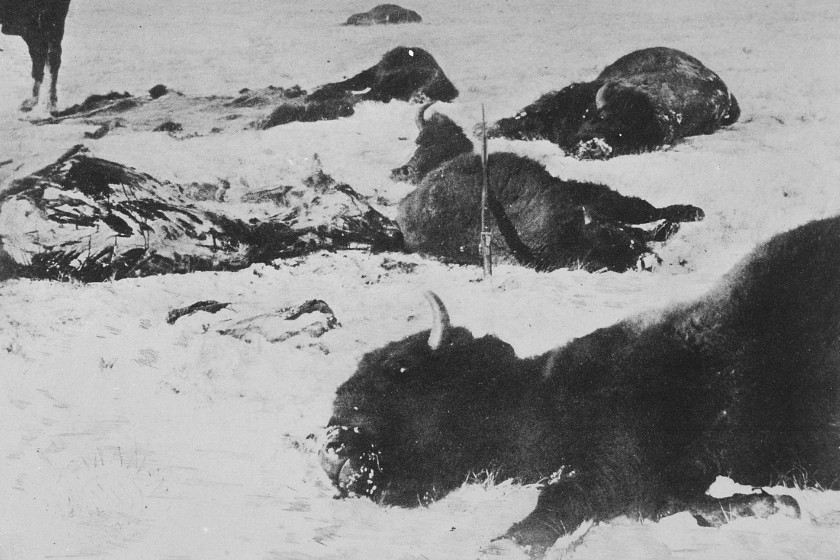
Wikimedia Commons: Unknown Photographer
After the Civil War, the U.S. Government started sending masses of troops out to the Great Plains to clear out the Native Americans. Some of the Natives chose to fight back, making it a longer, and slower process than the Army wanted. Aside from outright killing Natives or forcing them to reservations, the Army decided they needed something else to turn the odds in their favor. Unfortunately, they quickly realized the plains Indians were heavily dependent on the bison. They used nearly every part of the animal for food, clothing, and shelter. Army officials began sending recommendations back to their generals that the extermination of the bison was probably the best way to get the Native Americans to leave.
General William Tecumseh Sherman agreed. According to Smithsonian Magazine, this desire of the Army just happened to coincide with the building on the Transcontinental Railroad. Famous hunters like "Buffalo Bill" William Cody had been killing bison to feed railway workers for years. It was making a dent, but it was not enough to totally displace the Native Americans. Sherman's solution was to speed things along. Huge hunting parties from the eastern U.S. and Europe were invited out to the Great Plains. These hunters began slaughtering the bison with reckless abandon. All of it encouraged by the Army. While some of these hunters harvested the bones and hides for market, plenty of others were shot for fun and left to rot.
The railroad ended up being the deciding factor in the ultimate devastation of the bison. Soon, whole trainloads of hunters were rolling through bison country. Not only did they drop off thousands of bison hunters, tens of thousands of animals were slaughtered directly from the trains. The engineer would slow the cars and the hundreds of hunters would open fire on the bison herds. Ultimately, it was through this strategy that the bison population plummeted. From 1880 until 1900, the population dropped from around 300,000 to only a few hundred animals. The destruction of the bison had the desired effect for the Army. Many Native Americans were forced to abandon their homes, and were pushed onto reservations. The ecosystem of the American west would never be the same again.
Conservation Saves the Bison, Barely
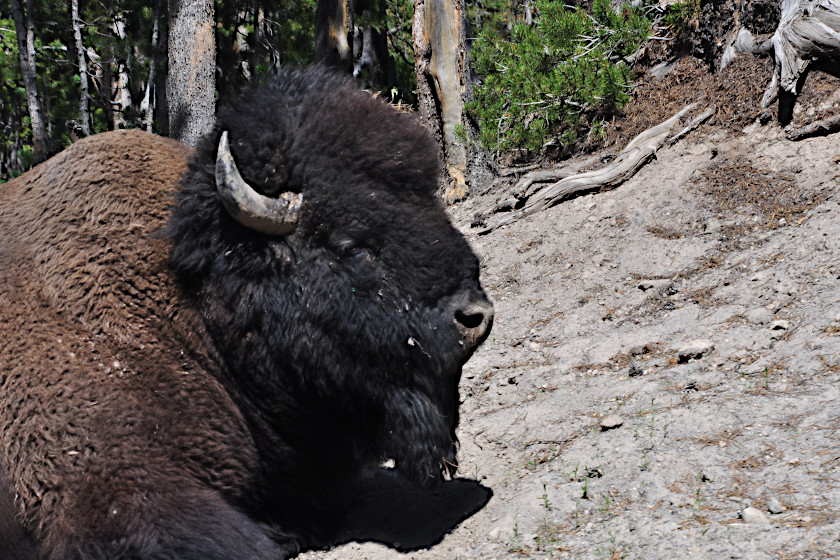
Travis Smola
It's likely the only thing that saved the North American bison from total annihilation was the establishment of Yellowstone National Park in 1872. As herds disappeared from the Great Plains and ranches popped up in their place, the new park became something of a last refuge for the animals. Even then, poaching was rampant. According to Vox, a poacher by the name of Ed Howell was caught red-handed with the remains of eight slaughtered bison there in March 1894. In an ironic twist, he was caught by the U.S. Army, who publicized their hand in the incident. Even though the Army were the ones who had started the bison's downfall in the first place.
This was one of the last major poaching events in the park. A few months later, hunting was outlawed in the park, protecting the herd from further harm. Then, in May of 1894, President William McKinley officially signed the Lacey Act into law. This was a game changer. The Lacey Act outlawed market hunting, which eliminated some of the last incentives for poachers to continue what the Army had started.
But it was going to take more than that to bring these herbivores back from the brink. In 1883, one of our most noted conservationists, Teddy Roosevelt, took part in a buffalo hunt of his own. Fast forward a few years later to 1905, and Roosevelt had realized the slaughter of the animals couldn't continue. He teamed up with zoologists William Temple Hornaday to form the American Bison Society. This organization started a bison breeding program in conjunction with the New York City Zoo. Over the next few years, the program shipped the National Bison Range in Montana, the Wichita Mountains Reserve in Oklahoma, and Wind Cave National Park in South Dakota. Additional herds were established in North Dakota and Nebraska.
Today, these conservation herds and the Yellowstone herd make up the bulk of bison populations. The Yellowstone herd is the only one that wasn't wiped out completely, making the park the only place the American bison has lived continuously since the ice age.
Bison Herds Today
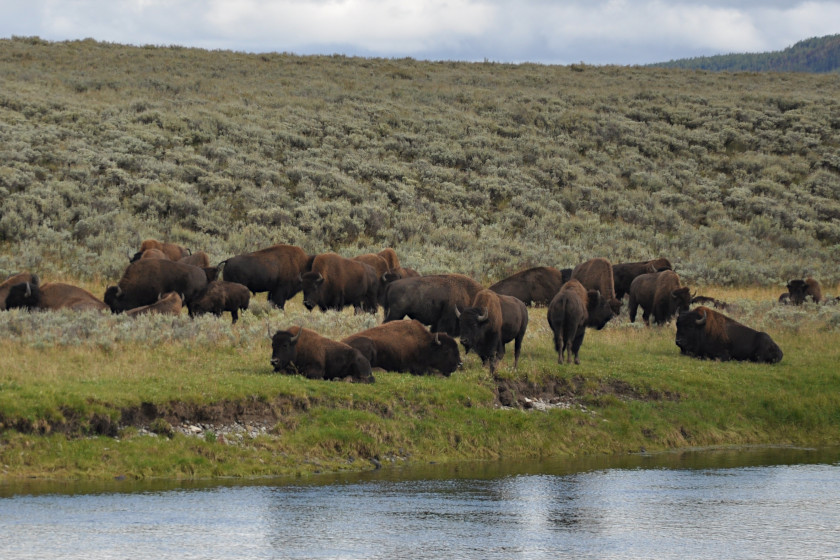
Travis Smola
We will probably never see the bison return their pre-Civil War numbers. Today, the International Union for Conservation of Nature classifies the bison on their IUCN red list as "near threatened." The free-ranging population sits around 15,000 to 30,000 on public lands. The good news is, even with increasing gray wolf and grizzly bear numbers, the bison will likely not be on the verge of extinction again. The commercial market for bison meat has boomed, mostly thanks to the lean nature of the meat, which makes it healthier than beef. Hundreds of thousands of the animals now live on private farms, helping ensure a solid future for these giant grazers.
These days, hundreds of thousands of tourists get the chance to view these great animals in the wild in places like Yellowstone in Wyoming, or Custer State Park in South Dakota. The breeding season in July and August being the busiest seasons for activity. Many visitors get the chance to see the animals wallow in the dirt, or for large bulls to butt heads in fights over female bison.
In fact, authorities have been reluctant to let wild bison herds expand too much. Some National Parks have allowed limited hunting to keep the large herbivores from spreading beyond the borders. There are real concerns with bison grazing the same lands as cattle and potentially spreading a disease known as Brucellosis. That's been the main concern of ranchers. There's also the fact that much of the bison's native range is now developed, and large herds returning could spark a whole new series of human/animal conflicts.
At the end of the day, the story of Native Americans and bison is one of the darker and sadder chapters of American history. The best thing we can do is to not forget the mistakes made in 19th century America. There are some harsh lessons to be learned from what the senseless slaughter of these animals did to a culture and way of life. And there are plenty of other lessons to learn from how the bison's removal had ecological impacts that altered the landscape of the Great Plains permanently. Only by learning from the past can we make a better future, and there's a lot to learn from the history of the bison.
For more outdoor content from Travis Smola, be sure to follow him on Twitter and Instagram For original videos, check out his Geocaching and Outdoors with Travis YouTube channels.
